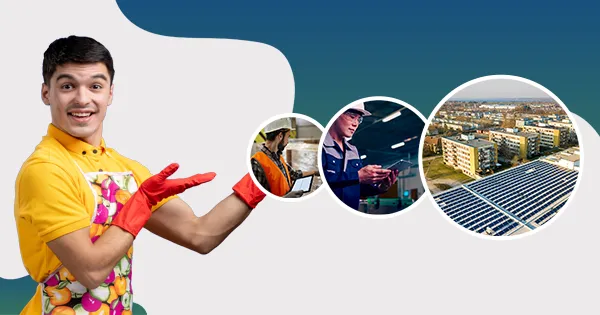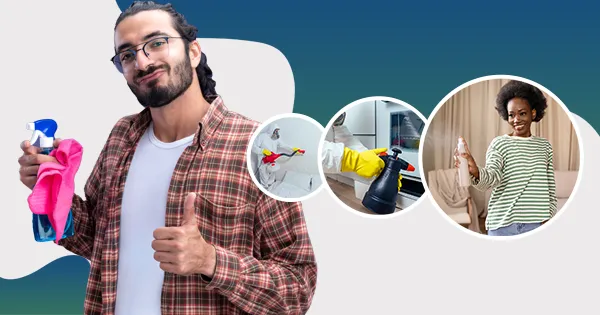Hygiene plays a crucial role in veterinary clinics, as it not only ensures the well-being of pets but also protects the health of clients and staff. Maintaining a clean and safe environment is essential to prevent the spread of diseases and infections. Animals with various health conditions visit veterinary clinics, which are high-traffic areas, making hygiene practices even more important to prioritise. By implementing proper cleaning and disinfection protocols, practising effective waste management, promoting hand hygiene, and using personal protective equipment (PPE), veterinary clinics can create a healthy and safe environment for all.
Creating a Clean and Safe Environment: Key Steps for Veterinary Clinics
Creating a clean and safe environment is crucial in veterinary clinics to prevent the spread of diseases and infections. Regular cleaning is essential to remove dirt, dust, and pathogens from surfaces. It is important to establish a cleaning schedule that includes daily cleaning of high-touch surfaces such as examination tables, countertops, and door handles. Regular deep cleaning should also ensure thorough sanitation of the entire clinic.
Proper waste disposal is another key step in maintaining a clean and safe environment. Veterinary clinics generate various types of waste, including biological waste, sharps, and hazardous materials. It is important to have designated waste disposal areas and follow local regulations for proper disposal. This involves separating different types of waste, using appropriate containers, and letting licensed waste management companies collect the waste.
Maintaining a clutter-free space is also important in veterinary clinics. Clutters can harbour dirt and pathogens, making it difficult to clean effectively. It is important to have proper storage areas for equipment, supplies, and medications to minimise clutter. Regular decluttering should remove any unnecessary items from the clinic.
Sterilisation and Disinfection: Essential Practices for Preventing the Spread of Diseases
They are essential practices in veterinary clinics to prevent the spread of diseases. Sterilisation refers to the complete elimination of all microorganisms, including bacteria, viruses, and fungi. Heat and chemicals typically achieve this. Disinfection, on the other hand, refers to the reduction of microorganisms to a safe level. Disinfectants kill or inactivate pathogens on surfaces and equipment.
Veterinary clinics should establish proper sterilisation and disinfection protocols. This includes using appropriate disinfectants that are effective against a wide range of pathogens. It is important to follow the manufacturer’s instructions for dilution, contact time, and application methods. Cleaning surfaces and equipment before disinfection should remove any visible dirt or organic matter.
Regular auditing and quality control should ensure that sterilisation and disinfection protocols are being followed correctly. This can include swabbing surfaces and equipment for microbial testing or using indicators to monitor the effectiveness of sterilisation processes.
Proper Waste Management: Promoting a Hygienic and Sustainable Clinic
Proper waste management is essential in veterinary clinics to promote hygiene and sustainability. Veterinary clinics generate various types of waste, including biological waste, sharps, pharmaceutical waste, and hazardous materials. It is important to have designated waste disposal areas and follow local regulations for proper disposal.
Collect biological waste, such as animal tissues or fluids, in leak-proof containers and dispose of it according to local regulations. Collect sharps, such as needles or scalpels, in puncture-resistant containers and dispose of them by local regulations.
Separate pharmaceutical waste from other waste streams and dispose of it properly. This involves expired medications or unused drugs that you cannot return to the supplier. It is important to follow local regulations for pharmaceutical waste disposal to prevent environmental contamination.
Store hazardous materials, such as chemicals or cleaning agents, in designated areas and dispose of them according to local regulations. It is important to have proper labelling and storage procedures for hazardous materials to prevent accidents or spills.
Implementing sustainable waste management practices can also benefit veterinary clinics. This can include recycling programmes for paper, plastic, and glass, as well as reducing the use of single-use items. By promoting sustainability, veterinary clinics can contribute to a healthier environment for pets, clients, and staff.
Hand Hygiene: A Crucial Step in Preventing Cross-Contamination
Hand hygiene is a crucial step in preventing cross-contamination in veterinary clinics. Hands can easily become contaminated with pathogens during routine procedures or when handling animals. Proper hand hygiene techniques should be followed to reduce the risk of spreading infections.
Handwashing with soap and water is the most effective method of hand hygiene. Promoting hand hygiene among staff and clients is important in veterinary clinics. This can include providing handwashing stations or hand sanitisers in easily accessible areas, displaying educational materials on proper hand hygiene techniques, and regularly reminding staff and clients about the importance of hand hygiene.
Maintaining Clean Surfaces and Equipment: Tips for Effective Cleaning and Sanitisation
Maintaining clean surfaces and equipment is essential in veterinary clinics to prevent the spread of diseases. Clean and sanitise surfaces that touch animal or animal fluids regularly to remove dirt and pathogens. Effective cleaning and sanitisation protocols should be established in veterinary clinics. This includes using appropriate cleaning agents that are effective against a wide range of pathogens. Use detergent and water to clean surfaces and remove visible dirt or organic matter. Use sanitiser after cleaning to kill or inactivate any remaining pathogens.
It is important to follow the manufacturer’s instructions for dilution, contact time, and application methods when using cleaning agents and sanitisers. Surfaces and equipment should be inspected regularly to ensure that they are clean and in good working condition.
Regular maintenance and inspection of equipment are also important in veterinary clinics. This includes cleaning and disinfecting equipment after each use, as well as conducting regular inspections to identify any signs of wear or damage. Repair or replace equipment that is not functioning properly to ensure the safety of animals and staff.
The Role of Personal Protective Equipment (PPE) in Veterinary Clinics: Protecting Pets and Clients
Personal protective equipment (PPE) plays a crucial role in veterinary clinics by protecting pets and clients from potential hazards. PPE includes items such as gloves, masks, gowns, and eye protection.
Gloves should be worn when handling animals, performing procedures, or encountering bodily fluids. They should be changed between patients or tasks to prevent cross-contamination. Gloves should be made of a material that is appropriate for the task at hand, such as latex or nitrile gloves for handling animals or performing procedures.
Masks should be worn when there is a risk of respiratory droplets or aerosols. This can include situations where animals are coughing or sneezing, or when performing procedures that generate respiratory droplets. Masks should cover the nose and mouth completely and should fit snugly against the face.
Gowns should be worn when there is a risk of contamination from bodily fluids or other hazardous materials. They should cover the body from the neck to the knees and should have long sleeves with elastic cuffs. Gowns should be changed between patients or tasks to prevent cross-contamination.
Eye protection should be worn when there is a risk of splashes or sprays. This can include situations where procedures are being performed that may generate splashes, or when handling animals that may scratch or bite. Eye protection should cover the front and sides of the eyes and should be made of a material that is resistant to impact and chemicals.
Preventive Measures for Airborne Pathogens: Ensuring a Healthy Environment for All
Preventive measures for airborne pathogens are important in veterinary clinics to ensure a healthy environment for all. Airborne pathogens can be transmitted through respiratory droplets or aerosols and can pose a risk to both animals and humans. Proper ventilation is crucial in veterinary clinics to reduce the concentration of airborne pathogens. This can include the use of mechanical ventilation systems, such as fans or air conditioning units, as well as natural ventilation through windows or doors. Ventilation systems should be properly maintained and cleaned regularly to ensure their effectiveness.
Air filtration systems can also help to remove airborne pathogens from the environment. High-efficiency particulate air (HEPA) filters are effective at capturing small particles, including bacteria and viruses. These filters should be regularly inspected and replaced as needed to maintain their effectiveness. In situations where there is a high risk of airborne transmission, additional measures may be necessary.
Regular cleaning and disinfection of surfaces and equipment are also important in preventing the spread of airborne pathogens. This includes cleaning high-touch surfaces such as doorknobs, light switches, and countertops, as well as disinfecting equipment that may encounter respiratory droplets or aerosols.
Educating Staff and Clients: Promoting Hygiene Awareness in Veterinary Clinics
Educating staff and clients about hygiene practices is important in veterinary clinics to promote a culture of hygiene awareness. By providing training and information, veterinary clinics can ensure that everyone understands the importance of hygiene and knows how to implement proper practices.
Staff should receive regular training on hygiene protocols, including hand hygiene, cleaning and disinfection procedures, waste management, and the use of PPE. This training should be provided during onboarding and should be reinforced through regular refresher courses or meetings. Staff should also have access to educational materials, such as posters or handouts, that provide information on proper hygiene practices.
Clients should also be educated about hygiene practices in veterinary clinics. This can include providing information on hand hygiene, the importance of keeping pets clean and healthy, and the proper disposal of waste. Educational materials can be provided in waiting areas or exam rooms, and staff can also provide verbal reminders or answer any questions that clients may have.
Regular communication is important in promoting hygiene awareness in veterinary clinics. This can include regular updates on hygiene protocols or reminders about specific practices. Staff should also be encouraged to ask questions or provide feedback on hygiene practices to ensure continuous improvement.
Regular Audit and Quality Control: Ensuring Consistent Hygiene Standards in Veterinary Clinics
Regular auditing and quality control are important in veterinary clinics to ensure consistent hygiene standards. By conducting audits and inspections, veterinary clinics can identify any areas for improvement and ensure that hygiene protocols are being followed correctly. Audits should be conducted regularly to assess the cleanliness and safety of the clinic. This can include visual inspections of surfaces and equipment, as well as microbial testing or swabbing for contamination. Audits should be conducted by trained staff and external experts to ensure accuracy and objectivity.
Quality control measures should be implemented to monitor the effectiveness of hygiene practices. This can include using indicators or test strips to monitor the effectiveness of sterilisation processes or conducting regular checks of cleaning and disinfection procedures. Any deviations from the established protocols should be addressed immediately to prevent the spread of diseases. Regular communication and feedback are important in maintaining consistent hygiene standards. Staff should be encouraged to report any issues or concerns regarding hygiene practices, and management should provide regular updates on any changes or improvements that have been made. This open communication can help identify any areas for improvement and ensure that hygiene standards are consistently met.
Conclusion
Hygiene plays a crucial role in veterinary clinics, as it not only ensures the well-being of pets but also protects the health of clients and staff. By creating a clean and safe environment, implementing proper sterilisation and disinfection practices, practising effective waste management, promoting hand hygiene, maintaining clean surfaces and equipment, using personal protective equipment (PPE), preventing airborne pathogens, educating staff and clients, and conducting regular audits and quality control measures, veterinary clinics can prioritise hygiene practices for the well-being of all. By prioritising hygiene, veterinary clinics can create a healthy and safe environment for pets, clients, and staff.







